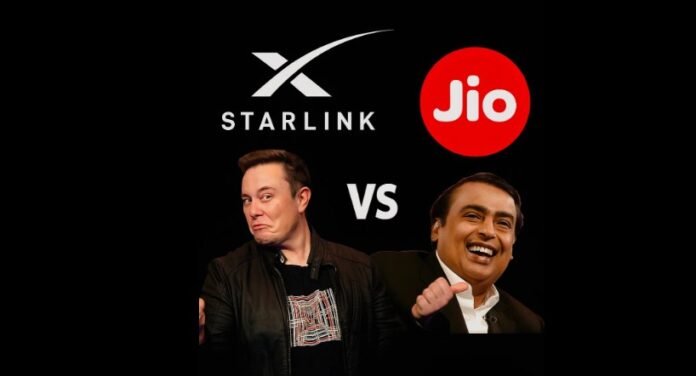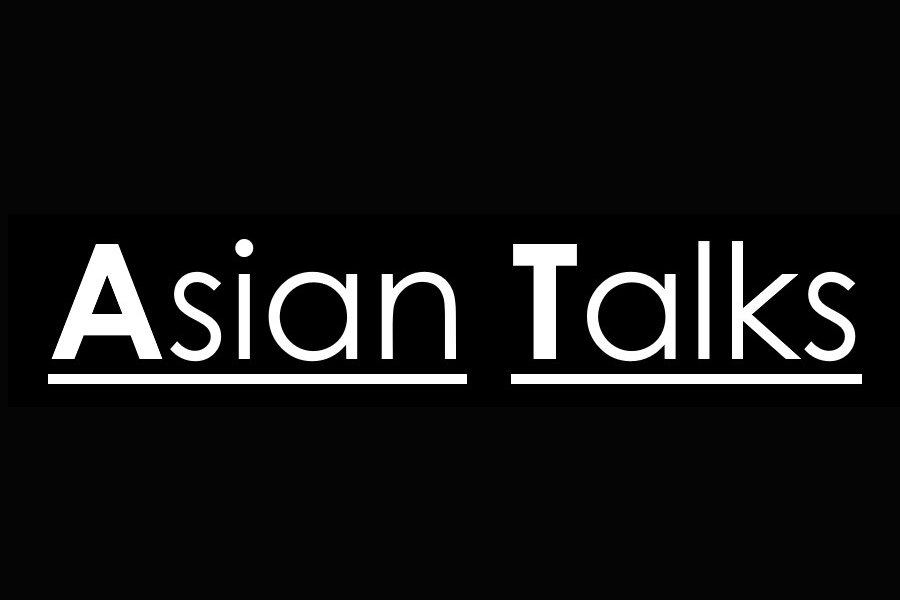The way we connect to the internet is changing faster than ever before. For decades, internet connectivity largely depended on fiber optic cables, copper lines (DSL), or mobile data networks. These systems served billions, but they came with serious limitations—cable infrastructure is expensive and difficult to lay in rural or mountainous areas, while mobile networks are often congested and inconsistent.
Enter two of the most disruptive technologies of the 2020s: fixed wireless access (FWA), represented in India by Jio AirFiber, and low-earth orbit (LEO) satellite internet, led globally by Starlink.
Fixed wireless beams high-speed 5G or LTE signals directly into homes or businesses, bypassing the need for underground wiring. Meanwhile, Starlink operates in space, with thousands of satellites orbiting the Earth to deliver internet to even the remotest corners.
This is not just a story about speed upgrades—it’s a story about closing the digital divide. In countries like India, where urban centers thrive with high-speed broadband but rural areas remain disconnected, technologies like AirFiber and Starlink could redefine digital access.
And in 2025, this comparison is especially important. The demand for seamless internet in India—home to nearly 1.5 billion people—is at an all-time high. Choosing between Jio AirFiber and Starlink isn’t just about Mbps and latency; it’s about affordability, accessibility, and the future of connectivity itself.
Why This Comparison Matters for India
India stands at a digital crossroads. Fiber broadband is widely available in metros, but hundreds of millions in semi-urban and rural regions are underserved or left out entirely. As education, healthcare, work, and entertainment shift online, having reliable internet has become a basic necessity, not a luxury.
-
Jio AirFiber seeks to solve this by using Jio’s sprawling telecom infrastructure and 5G rollout to deliver fiber-like speeds without cables.
-
Starlink, backed by Elon Musk’s SpaceX, aims to sidestep terrestrial limitations altogether, bringing space-based internet to anyone with a clear view of the sky.
The contrast couldn’t be sharper: one builds from the ground up, the other beams from above.
This article dives into pricing, installation, performance, coverage, weather resilience, and customer support—before helping you decide which option suits your lifestyle best.
Jio AirFiber: Reliance’s Fixed Wireless Vision
What Is Jio AirFiber?
Jio AirFiber is Reliance Jio’s flagship fixed wireless solution launched in late 2023. Unlike broadband that requires fiber cables running into your home, AirFiber taps into Jio’s 5G towers to deliver high-speed internet wirelessly.
The device looks like a modern Wi-Fi router but functions like a plug-and-play 5G modem. No cables, no digging, no waiting for technicians—just instant internet.
At its launch, Reliance promised speeds up to 1 Gbps, effectively matching traditional fiber performance. Positioned as a “future-ready” service, AirFiber is marketed to households, small businesses, and startups looking for high-speed connectivity without installation hassles.
Availability Across India
When it first rolled out, Jio AirFiber was restricted to a handful of metros—Mumbai, Delhi, Hyderabad, Ahmedabad. Fast forward to 2025, and it’s now available in 300+ cities, primarily tier-1 and tier-2 urban zones.
But here’s the catch: AirFiber depends on Jio’s standalone 5G coverage. That means availability in rural and hilly regions is still patchy. Expansion is ongoing, with Reliance promising coverage in 1000+ cities by end-2025, but for now, its utility is mostly urban.
Setup and Installation
One of Jio AirFiber’s strongest features is its simplicity:
-
Plug the device into a power outlet.
-
Scan a QR code via the MyJio app.
-
Connect devices through Wi-Fi or Ethernet.
Within minutes, your home is a Wi-Fi 6 zone. The device supports multi-device streaming, online gaming, and video calls.
This DIY installation model appeals to busy urban professionals, though less tech-savvy users may still prefer occasional assistance.
Starlink: SpaceX’s Internet-from-Space
What Is Starlink?
Starlink is SpaceX’s ambitious project to deploy thousands of LEO satellites orbiting at ~550 km above Earth, drastically lower than traditional geostationary satellites (~35,000 km). The shorter distance translates to lower latency and faster speeds.
This makes Starlink a global game-changer, capable of connecting deserts, mountains, islands, and disaster zones. Whether you live in rural Rajasthan or on a Himalayan trek route, if you can see the sky, you can get online.
Starlink’s Indian Journey
Globally, Starlink has 3 million+ subscribers across 70 countries. India has been a challenging market due to regulatory hurdles, but after delays, approvals in 2024 finally allowed operations in underserved zones.
Initially, Starlink is targeting rural schools, border areas, tribal regions, and other zones where laying fiber is impractical. But technically, anyone in India within coverage zones can subscribe.
Unlike Jio, Starlink does not rely on Indian telecom infrastructure, giving it a unique independence.
Hardware and Installation
Each Starlink kit includes:
-
A sleek dish (“Dishy McFlatface”).
-
A Wi-Fi router.
-
Mounting tripod and cables.
Setup involves placing the dish in an open sky area, connecting the router, and letting the system auto-align with satellites. The Starlink app guides placement using AR and signal heat maps.
The dish is weatherproof, adjusting angles automatically to maintain connectivity.
Speed and Performance Comparison
Jio AirFiber Speeds
-
Promised: Up to 1 Gbps.
-
Real-world: 200–500 Mbps in urban areas.
-
Uploads: 50–100 Mbps.
-
Latency: 10–20 ms (excellent for gamers).
AirFiber performs best in cities with strong 5G signals. Speeds can dip indoors or in high-rises, but overall stability is impressive compared to older 4G routers.
Starlink Speeds
-
Download: 150–250 Mbps in India (2025 average).
-
Uploads: 20–50 Mbps.
-
Latency: 30–50 ms (exceptional for satellite internet).
Starlink shines in consistency, especially in rural areas where Jio or fiber are unavailable. Weather interference can cause minor dips, but the network’s global redundancy minimizes downtime.
Gaming & Streaming
-
Jio AirFiber: Better for competitive gaming, near-instant Zoom calls, and OTT streaming.
-
Starlink: Handles 4K streaming and casual gaming well, though latency-sensitive esports gamers may notice slight delays.
Pricing Breakdown
Jio AirFiber Plans
-
₹599/month → 100 Mbps (FUP ~1000 GB).
-
₹999/month → 500 Mbps.
-
₹1499/month → 1 Gbps.
-
Bundled OTTs (Netflix, Disney+ Hotstar, SonyLIV).
-
Setup fee: ~₹1000 (often waived).
-
Device: rental or ₹6000 purchase.
Verdict: Highly affordable, especially with OTT bundles.
Starlink Pricing
-
Monthly: ~₹3300+.
-
Hardware: ₹30,000–35,000 (one-time).
-
No bundled perks; pure internet service.
-
“Roaming Mode” allows portability.
-
Subscription: month-to-month, cancel anytime.
Verdict: Premium pricing, justified by unique coverage.
Coverage and Reliability
-
Jio AirFiber: Best in metros and semi-urban areas. Limited in rural zones until 5G expansion matures.
-
Starlink: Pan-India as long as you have clear sky visibility. Ideal for rural homes, farms, schools, and mobile users.
Weather Performance
-
Jio AirFiber: May face occasional interference from heavy rain or building obstructions. Works reliably in strong coverage zones.
-
Starlink: More resilient but not immune; heavy cloud cover or trees can cause short drops. However, satellite redundancy ensures quick recovery.
Customer Support
-
Jio: Extensive support network with call centers, multilingual options, app integration, and doorstep visits in urban areas.
-
Starlink: Ticket-based system via app or email; reliable but slower. Limited localized support in India as of 2025.
Data Usage and Fair Use
-
Jio AirFiber: FUP applies (e.g., 1000 GB full-speed, then 2 Mbps). Heavy users may find limits restrictive.
-
Starlink: 1 TB of “Priority Data” monthly. After that, throttling applies only during peak hours.
Environmental and Health Concerns
-
Starlink: Astronomers raise concerns over satellite clutter and light pollution. Radiation fears are minimal, within safety standards.
-
Jio AirFiber: Relies on 5G towers. EMF levels are strictly regulated in India, far below global limits.
Feature Comparison Table
| Feature | Jio AirFiber | Starlink |
|---|---|---|
| Technology | 5G Fixed Wireless | LEO Satellite |
| Avg. Speed | 200–500 Mbps | 150–250 Mbps |
| Latency | 10–20 ms | 30–50 ms |
| Monthly Cost | ₹599–₹1499 | ₹3300+ |
| Hardware Cost | ~₹6000 (optional) | ₹30,000–35,000 |
| OTT Bundles | Yes | No |
| Coverage | Urban/semi-urban | Nationwide (with sky view) |
| Installation | Plug-and-play | DIY, needs open sky |
| Data Limits | FUP, booster packs | 1 TB Priority Data |
| Best For | Urban homes, gamers, OTT users | Rural/off-grid, mobile workers |
| Weather Impact | Moderate | Minimal, short drops |
| Customer Support | Extensive (call centers + app) | Ticket/email-based |
Who Should Choose What?
-
Go Jio AirFiber if you are:
-
An urban or semi-urban user with Jio 5G coverage.
-
A family bingeing OTT shows.
-
A gamer needing ultra-low latency.
-
Budget-conscious, seeking value-added bundles.
-
-
Go Starlink if you are:
-
Living in rural or remote areas with no broadband.
-
A digital nomad, freelancer, or adventurer.
-
Running an NGO, school, or farm needing connectivity.
-
Willing to pay a premium for reliability in off-grid living.
-
Conclusion: Air vs Space
Both Jio AirFiber and Starlink are redefining internet access in India, but they serve different audiences:
-
Jio AirFiber democratizes affordable, high-speed internet for cities and semi-urban centers.
-
Starlink connects the disconnected, reaching places where no cable or tower dares to go.
If you live in Mumbai or Lucknow, Jio is your best bet. If you’re in Ladakh, Bastar, or sailing along the coast—Starlink is your lifeline.
Either way, the future of Indian internet is no longer tied to cables—it’s flying through the air and beaming down from space.



